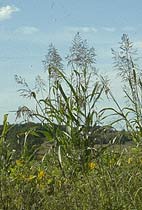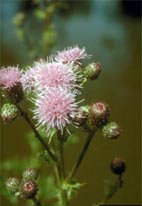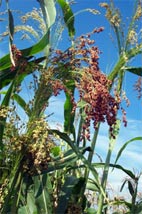Invasive species are organisms that cause economic or environmental harm and threaten human health. Invasive species spread aggressively, reproduce quickly, tolerate a wide range of environmental conditions and habitats, and compete efficiently against other species. Ecological damage results from invasive species outcompeting desirable, native species, reducing biological diversity, and altering ecosystems.
Invasive species can be either native or non-native species. (Native species are those that evolve naturally in an ecosystem.) Poison ivy and fox grape are species native to Maryland but considered invasive because they overtake an ecosystem and imperil safety and maintenance on our roadways.
Non-native species (also called alien or exotic) have been introduced, accidentally or purposefully, into ecosystems in which they did not evolve. Non-native species come from other countries or even other parts of the United States.
While some non-native species are not problematic, many disrupt the natural balance of an ecosystem. Their aggressive growth causes safety and maintenance concerns along our roads and highways. Johnsongrass, Canada thistle and shattercane are non-native species that the State of Maryland declared noxious weeds. The Maryland Weed Control Law requires landowners, including the Maryland Department of Transportation State Highway Administration (MDOT SHA), to manage noxious weeds found on MDOT SHA land.
 |
 |
 |
Johnsongrass |
Canadian Thistle |
Shattercane |
MDOT SHA uses native species for roadside landscaping whenever possible. Although landscape beds and roadside plantings usually include a mix of both native and non-native species, MDOT SHA works closely with the
Maryland Invasive Species Council and other agencies to stop using invasive species.
MDOT SHA initiated several projects to remove invasive plants along our roadsides and restore these areas with meadows and reforestation plantings with native species adapted to the local environment. These projects have occurred along I-83, I-95, and US 301.
Many rare and endangered native plants and animals require special environments to survive. It is important to protect the streams, wetlands, and forests where they grow. Controlling invasive species and restoring native plant communities are ways that we can help vulnerable native species reproduce and thrive for future generations.
Additional Information